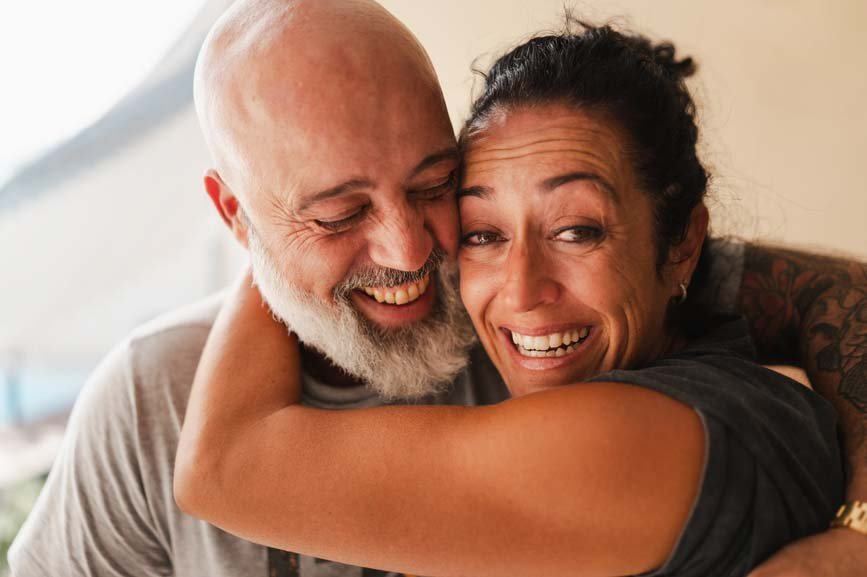Have you ever found yourself having the same repetitive argument with your partner, wondering how you ended up back here—yet again? If so, you're not alone. As a couples therapist, I've observed that behind nearly every repetitive conflict is an underlying trigger—a powerful emotional "button" that, when pressed, sends you into an intense reaction.
Understanding and identifying these triggers is one of the most transformative steps you can take toward creating a healthier relationship. Let’s explore why triggers matter, how they fuel the cycle of conflict, and what you can do about them.
What Exactly Is a Trigger?
When working with clients, I define triggers simply:
Triggers are anything in your present experience that closely resembles something from your past that once activated your body’s survival response—fight, flight, freeze, or fawn.
Think of triggers as emotional landmines. They’re embedded within you, waiting for certain situations or behaviors to set them off. When triggered, your nervous system instantly reverts to an automatic response designed for survival. Just as encountering a bear in the wilderness triggers your brain and body to protect you from danger, triggers in relationships activate similar powerful responses—even if your partner isn’t a bear.
However, these automatic survival reactions often lead to unnecessary conflict and disconnection in your relationship.
(For more detail on emotional survival responses, see my blog post “Understanding the Dynamics of Relationships and Neurological Triggers.”)
The Four F’s: How Triggers Show Up in Conflict
When triggered, you typically react in one of four ways:
Fight: You become defensive, argumentative, angry, or aggressive.
Flight: You withdraw, physically or emotionally, distancing yourself.
Freeze: You shut down, becoming emotionally numb, silent, or unable to respond.
Fawn: You attempt to appease or placate your partner, trying to smooth things over to avoid conflict.
Consider the following scenario: Your partner comes home from work visibly irritated and makes a sharp remark about the clutter in the kitchen. This might trigger a "fight" response in you—perhaps because criticism in your childhood often led to loud arguments, making you feel unsafe. Your immediate reaction is to snap back defensively.
Now your partner, feeling attacked or criticized, gets triggered too, perhaps dropping into a "flight" response—emotionally withdrawing or physically leaving the room. Within moments, you've both spiraled into your triggered patterns, creating conflict and misunderstanding.
(For practical ways to calm yourself when triggered, read my blog post “How to Calm Yourself After Being Triggered.”)
Why It’s Crucial to Identify Your Triggers
When you remain unaware of your triggers, they control your relationship dynamics. Every time a trigger is activated, it sets off an automatic pattern that pulls both of you deeper into conflict. Your arguments feel repetitive because, beneath each fight’s content, it’s often the same triggers driving your reactions.
The good news is this: becoming aware of your triggers gives you the power to change your automatic responses. Instead of letting triggers control you, you gain the ability to notice, pause, and respond differently.
This awareness provides crucial space and perspective, allowing you to communicate more effectively and compassionately with your partner.
How to Identify and Work Through Your Triggers
Here's how you can break the cycle of conflict triggered by past wounds:
1. Reflect on your reaction patterns:
Think back to recent conflicts. When did you feel most reactive? Did you respond by fighting, fleeing, freezing, or fawning? Understanding your patterns is the first step.
2. Identify the original source:
Triggers often have deep roots in your past. Ask yourself: “What does this remind me of? When have I felt this way before?” This can help reveal the underlying fear, pain, or hurt driving your reaction.
3. Name your triggers clearly:
Once identified, name them specifically. For example, “I get triggered when I feel ignored,” or “I get triggered when I sense criticism.” Clearly naming your triggers helps you (and eventually your partner) recognize them the moment they arise.
4. Communicate your triggers to your partner:
Discuss your triggers openly. Remember, the goal isn't blame, but deeper understanding. You might say:
“I’ve realized when you raise your voice, it triggers my anxiety because of experiences in my family growing up.”
“I now understand why I withdraw when we argue—I’m triggered by feelings of being criticized.”
5. Create strategies to respond differently:
Learning to calm your nervous system when triggered greatly reduces conflict. Practicing self-calming techniques like deep breathing, stepping away momentarily, or positive self-talk can help you respond instead of react impulsively.
(See my detailed strategies in “How to Calm Yourself After Being Triggered.”)
6. Notice and repair after conflict:
Conflict isn’t the enemy—unresolved, unaddressed conflict is. Notice when triggers lead to arguments and learn how to repair afterward effectively. Acknowledge your reactions and offer sincere apologies when necessary. Remember, effectively repairing after conflict is far more important for relationship resilience than avoiding conflict entirely.
(Read more about repair in my post “How to Apologize to Your Partner Effectively.”)
Triggers Don’t Define Your Relationship—Your Responses Do
The fact that you and your partner get triggered isn't a sign something is wrong. It's proof you’re human, each with past experiences and vulnerabilities. The key isn’t avoiding triggers altogether—that’s impossible—but responding differently when they inevitably happen.
By recognizing and openly communicating your triggers, you do something profoundly powerful: you choose vulnerability with each other. This vulnerability builds trust, safety, and intimacy. When both partners feel safe enough to share their triggers openly, relationships grow stronger, more resilient, and more deeply connected.
If you're finding it challenging to identify or manage your triggers—or your conflicts feel overwhelming—I’m here to support you. Reach out by phone at 612-230-7171, email me via my contact page, or schedule a consultation online.
Together, let’s shift your relationship dynamics from repeated conflict cycles into patterns of mutual understanding, empathy, and lasting connection.



